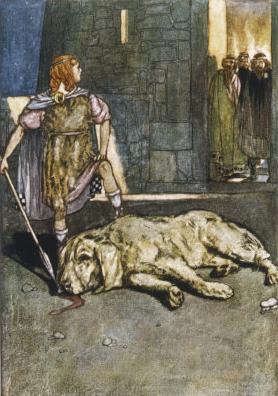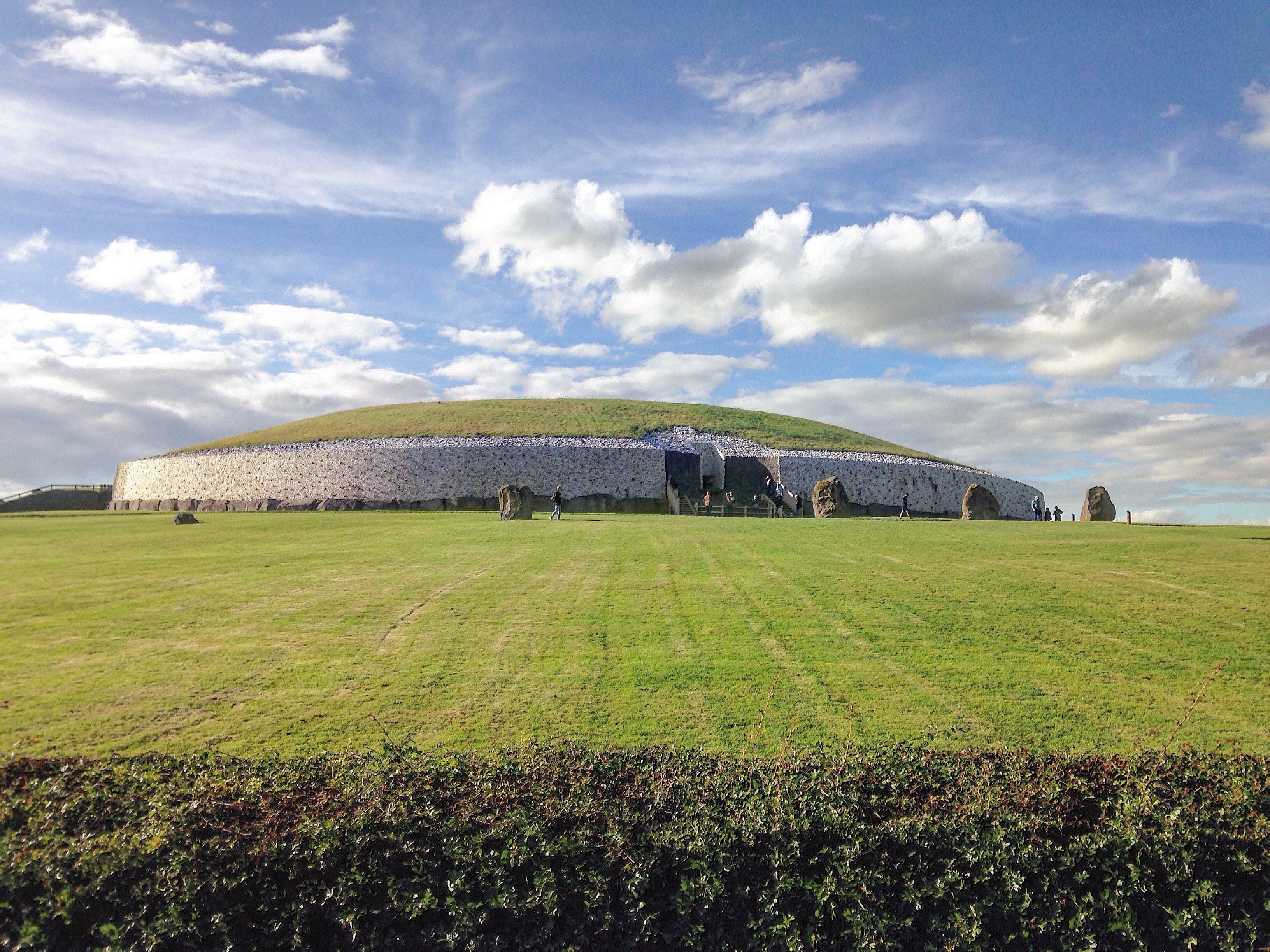|
Fosterage
Fosterage, the practice of a family bringing up a child not their own, differs from adoption in that the child's parents, not the foster-parents, remain the acknowledged parents. In many modern western societies foster care can be organised by the state to care for children with troubled family backgrounds, usually on a temporary basis. In many pre-modern societies fosterage was a form of patronage, whereby influential families cemented political relationships by bringing up each other's children, similar to arranged marriages, also based on dynastic or alliance calculations. This practice was once common in Ireland, Wales, and Scotland. Fosterage in Scotland In medieval Highland society there was a system of fosterage among clan leaders, where boys and girls would leave their parent's house to be brought up in that of other chiefs, creating a fictive bond of kinship that helped cement alliances and mutual bonds of obligation. In his ''A Journey to the Western Isles of Scotl ... [...More Info...] [...Related Items...] OR: [Wikipedia] [Google] [Baidu] |
Cú Chulainn
Cú Chulainn ( ), called the Hound of Ulster ( Irish: ''Cú Uladh''), is a warrior hero and demigod in the Ulster Cycle of Irish mythology, as well as in Scottish and Manx folklore. He is believed to be an incarnation of the Irish god Lugh, who is also his father. His mother is the mortal Deichtine, sister of king Conchobar mac Nessa. Born Sétanta, he gained his better-known name as a child, after killing Culann's fierce guard dog in self defence and offering to take its place until a replacement could be reared, hence he became the "Hound (''cú'') of Culann". He was trained in martial arts by Scáthach, who gave him the spear Gáe Bulg. It was prophesied that his great deeds would give him everlasting fame, but that his life would be short. At the age of seventeen he defends Ulster single-handedly against the armies of queen Medb of Connacht in the famous '' Táin Bó Cúailnge'' ("Cattle Raid of Cooley"). He is known for his terrifying battle frenzy (''ríastra ... [...More Info...] [...Related Items...] OR: [Wikipedia] [Google] [Baidu] |
Ollam
An or ollamh (; anglicised as ollave or ollav), plural ollomain, in early Irish literature, is a member of the highest rank of filí. The term is used to refer to the highest member of any group; thus an ''ollam brithem'' would be the highest rank of judge, and an ''ollam rí'' the highest rank of king. Ollav was also applied to a druidic rank; meaning much the same as "professor", or person of great learning. Typically the ollav/ollam was endowed with a distinction equal to that of a king, and could therefore wear six colours. There was an official post in ancient Ireland called the " Rí Ollam" or "Ard Ollam" or Chief Ollam of Ireland. The holder of the post had a standing equal to the High King of Ireland. Ollamh Fodhla An or ollamh (; anglicised as ollave or ollav), plural ollomain, in early Irish literature, is a member of the highest rank of filí. The term is used to refer to the highest member of any group; thus an ''ollam brithem'' would be the highes ... ... [...More Info...] [...Related Items...] OR: [Wikipedia] [Google] [Baidu] |
Adoption
Adoption is a process whereby a person assumes the parenting of another, usually a child, from that person's biological or legal parent or parents. Legal adoptions permanently transfer all rights and responsibilities, along with filiation, from the biological parents to the adoptive parents. Unlike guardianship or other systems designed for the care of the young, adoption is intended to effect a permanent change in status and as such requires societal recognition, either through legal or religious sanction. Historically, some societies have enacted specific laws governing adoption, while others used less formal means (notably contracts that specified inheritance rights and parental responsibilities without an accompanying transfer of filiation). Modern systems of adoption, arising in the 20th century, tend to be governed by comprehensive statutes and regulations. History Antiquity ;Adoption for the well-born While the modern form of adoption emerged in the United States, ... [...More Info...] [...Related Items...] OR: [Wikipedia] [Google] [Baidu] |
Scotland
Scotland (, ) is a country that is part of the United Kingdom. Covering the northern third of the island of Great Britain, mainland Scotland has a border with England to the southeast and is otherwise surrounded by the Atlantic Ocean to the north and west, the North Sea to the northeast and east, and the Irish Sea to the south. It also contains more than 790 islands, principally in the archipelagos of the Hebrides and the Northern Isles. Most of the population, including the capital Edinburgh, is concentrated in the Central Belt—the plain between the Scottish Highlands and the Southern Uplands—in the Scottish Lowlands. Scotland is divided into 32 administrative subdivisions or local authorities, known as council areas. Glasgow City is the largest council area in terms of population, with Highland being the largest in terms of area. Limited self-governing power, covering matters such as education, social services and roads and transportation, is devolved from the ... [...More Info...] [...Related Items...] OR: [Wikipedia] [Google] [Baidu] |
Family Law
Family law (also called matrimonial law or the law of domestic relations) is an area of the law that deals with family matters and domestic relations. Overview Subjects that commonly fall under a nation's body of family law include: * Marriage, civil unions, and domestic partnerships: ** Entry into legally recognized spousal and domestic relationships ** The termination of legally recognized family relationships and ancillary matters, including divorce, annulment, property settlements, alimony, child custody and visitation, child support and alimony awards **Prenuptial and Postnuptial agreements * Adoption: proceedings to adopt a child and, in some cases, an adult. * Surrogacy: the law and process of giving birth as a surrogate mother * Child protective proceedings: court proceedings that may result from state intervention in cases of child abuse and child neglect * Juvenile law: Matters relating to minors including status offenses, delinquency Delinquent or del ... [...More Info...] [...Related Items...] OR: [Wikipedia] [Google] [Baidu] |
Texas State University
Texas State University is a public research university in San Marcos, Texas. Since its establishment in 1899, the university has grown to the second largest university in the Greater Austin metropolitan area and the fifth largest university in the state of Texas. Texas State University reached a record enrollment of 38,808 students in the 2016 fall semester, continuing a trend of enrollment growth over several years. The university offers more than 200 degree options from its ten colleges. Texas State is classified among "R2: Doctoral Universities – High research activity" and an emerging research university by the State of Texas. The university is accredited by the Southern Association of Colleges and Schools (SACS). Faculty from the various colleges have consistently been granted Fulbright Scholarships resulting in Texas State's being recognized as one of the top producing universities of Fulbright Scholars. The 36th president of the United States, Lyndon B. Johnson, ... [...More Info...] [...Related Items...] OR: [Wikipedia] [Google] [Baidu] |
Dafydd Jenkins (legal Scholar)
Dafydd Arwyn Jenkins (christened David; 1 March 1911 – 5 May 2012) was a Welsh barrister, activist, and legal scholar and historian. He was Professor of Legal History and Welsh Law at the University College of Wales, Aberystwyth (later Aberystwyth University), from 1975 to 1978. Life and work Born in London to Welsh parents, William and Elizabeth Jenkins, he was educated at Sidney Sussex College, Cambridge, and called to the bar at Gray's Inn in 1934.Richard W. Ireland"Jenkins, David Arwyn (Dafydd) (1911–2012)" ''Dictionary of Welsh Biography'' (13 December 2018). Retrieved 17 December 2018.Meic Stephens"Professor Dafydd Jenkins: Barrister and authority on the laws of medieval Wales" ''The Independent'', 28 May 2012. Retrieved 17 December 2018. A "socialist Anglican, a man of letters, a Welsh-language publisher ... and a nationalist", [...More Info...] [...Related Items...] OR: [Wikipedia] [Google] [Baidu] |
Welsh History Review
''The Welsh History Review'' (Welsh: Cylchgrawn Hanes Cymru) is a peer-reviewed academic journal An academic journal or scholarly journal is a periodical publication in which scholarship relating to a particular academic discipline is published. Academic journals serve as permanent and transparent forums for the presentation, scrutiny, and ... covering the history of Wales. It is published in four parts per volume, one volume every two years. The journal was established in 1960. The editors-in-chief are Huw Pryce ( Bangor University) and Paul O'Leary ( Aberystwyth University). External links * ''The Welsh History Review'' Vols 1–20 at Welsh Journals Online History of Wales Welsh history journals Publications established in 1960 Multilingual journals Biannual journals University of Wales {{Wales-hist-stub ... [...More Info...] [...Related Items...] OR: [Wikipedia] [Google] [Baidu] |
Caucasus
The Caucasus () or Caucasia (), is a region between the Black Sea and the Caspian Sea, mainly comprising Armenia, Azerbaijan, Georgia (country), Georgia, and parts of Southern Russia. The Caucasus Mountains, including the Greater Caucasus range, have historically been considered as a natural barrier between Eastern Europe and Western Asia. Mount Elbrus in Russia, Europe's highest mountain, is situated in the Western Caucasus. On the southern side, the Lesser Caucasus includes the Javakheti Plateau and the Armenian highlands, part of which is in Turkey. The Caucasus is divided into the North Caucasus and South Caucasus, although the Western Caucasus also exists as a distinct geographic space within the North Caucasus. The Greater Caucasus mountain range in the north is mostly shared by Russia and Georgia as well as the northernmost parts of Azerbaijan. The Lesser Caucasus mountain range in the south is occupied by several independent states, mostly by Armenia, Azerbaijan, and Ge ... [...More Info...] [...Related Items...] OR: [Wikipedia] [Google] [Baidu] |
Ancient Ireland
The prehistory of Ireland has been pieced together from archaeological evidence, which has grown at an increasing rate over the last decades. It begins with the first evidence of permanent human residence in Ireland around 10,500 BC (although there is evidence of human presence as early as 31,000 BC) and finishes with the start of the historical record around 400 AD. Both the beginning and end dates of the period are later than for much of Europe and all of the Near East. The prehistoric period covers the Palaeolithic, Mesolithic, Neolithic, Bronze Age and Iron Age societies of Ireland. For much of Europe, the historical record begins when the Romans invaded; as Ireland was not invaded by the Romans its historical record starts later, with the coming of Christianity. The two periods that have left the most spectacular groups of remains are the Neolithic, with its megalithic tombs, and the gold jewellery of the Bronze Age, when Ireland was a major centre of gold mining. Ir ... [...More Info...] [...Related Items...] OR: [Wikipedia] [Google] [Baidu] |
Njáll Þorgeirsson
Njáll Þorgeirsson (Old Norse: ; Modern Icelandic: ) was a 10th and early-11th-century Icelandic lawyer who lived at Bergþórshvoll in Landeyjar, Iceland. He was one of the main protagonists of ''Njáls saga'', a medieval Icelandic saga which describes a series of blood feuds. Biography Njáll was the son of Þorgeir gollnir Ófeigsson. His paternal grandfather had fallen out of favour with the king and therefore decided to leave Norway but as he had prepared and was about to leave when the king's errandmen came to him and took his life. After that his grandmother and their children and her brother left for Iceland. ''Njáls saga'' does not in important events contradict other sources but in details such as genealogy it sometimes contradicts the ''Landnámabók'' which is thought more trustworthy. The name Njáll is a Norse derivative of the Irish name Niall. Njáll lived in Bergþórshvoll and was married to Bergþóra Skarphéðinsdóttir. He is described as a kindly, wealt ... [...More Info...] [...Related Items...] OR: [Wikipedia] [Google] [Baidu] |



